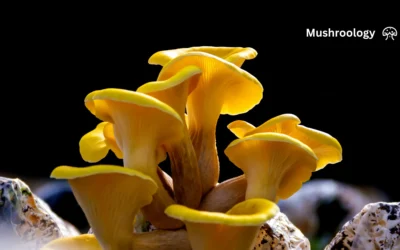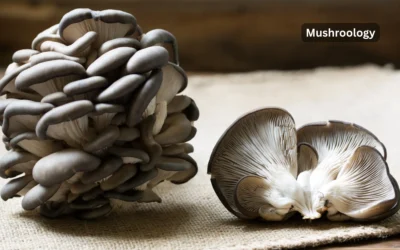Psilocybin mushrooms, commonly known as magic mushrooms or shrooms, are fungi containing the psychoactive compound psilocybin. This comprehensive guide explores the science, history, effects, and current research surrounding these fascinating organisms from a strictly educational perspective.
What are psilocybin mushrooms?
Psilocybin mushrooms are fungi that naturally produce psilocybin and psilocin, compounds that can alter perception, mood, and cognitive processes. Over 200 species of mushrooms contain psilocybin, with the most common belonging to the genus Psilocybe.
Key species of psilocybin mushrooms
Most researched species:
- Psilocybe cubensis: Most widely cultivated, contains 0.63% psilocybin
- Psilocybe semilanceata (Liberty Caps): Found in grassy areas, 0.98% psilocybin
- Psilocybe azurescens: Most potent, up to 1.78% psilocybin
- Psilocybe cyanescens (Wavy Caps): Common in urban areas, 0.85% psilocybin
- Psilocybe mexicana: Historical use by indigenous peoples, 0.6% psilocybin
Important note: This information is for educational purposes only. The cultivation, possession, and use of psilocybin mushrooms is illegal in most jurisdictions.

How psilocybin works in the brain
The neuroscience of psilocybin
When consumed, psilocybin is converted to psilocin in the body through a process called dephosphorylation. Here’s what happens:
- Serotonin receptor activation: Psilocin primarily binds to 5-HT2A serotonin receptors
- Neural connectivity changes: Brain imaging shows increased communication between normally disconnected brain regions
- Default Mode Network suppression: The brain’s “ego center” becomes less active
- Neuroplasticity enhancement: Promotes formation of new neural connections
Timeline of psilocybin effects
Typical progression:
- 20-40 minutes: Onset of effects
- 60-90 minutes: Peak intensity
- 3-6 hours: Total duration
- 24-48 hours: Integration period
Factors affecting duration:
- Dosage amount
- Individual metabolism
- Stomach contents
- Species potency
Historical and cultural significance
Ancient use of psilocybin mushrooms
Archaeological evidence suggests psilocybin mushroom use dates back thousands of years:
- 9000 BCE: Rock art in North Africa depicting mushroom imagery
- 1500 BCE: “Mushroom stones” found in Guatemala and Mexico
- 500 BCE – 900 CE: Extensive use by Maya and Aztec civilizations
- Aztec terminology: “Teonanácatl” meaning “flesh of the gods”
Modern rediscovery
Key timeline:
- 1957: R. Gordon Wasson publishes Life Magazine article on Mexican mushroom ceremonies
- 1958: Albert Hofmann first synthesizes psilocybin
- 1960s: Harvard Psilocybin Project led by Timothy Leary and Richard Alpert
- 1970: Classified as Schedule I substance in the United States
- 2000s: Renaissance in psilocybin research begins
Current scientific research on psilocybin
Therapeutic applications being studied
Modern research from institutions like Johns Hopkins, NYU, and Imperial College London shows promising results:
Depression treatment:
- 2020 JAMA Psychiatry study: 71% of participants showed clinically significant improvement
- Effects lasted up to 4 weeks from just two doses
- Comparable to traditional antidepressants but faster acting
End-of-life anxiety:
- 80% of terminal cancer patients showed reduced anxiety and depression
- Effects persisted for 6+ months
- Improved quality of life and acceptance
Addiction treatment:
- Smoking cessation: 80% abstinence rate at 6 months (vs 35% for varenicline)
- Alcohol use disorder: 83% reduction in heavy drinking days
- Mechanism: “Reset” of addiction pathways in the brain
PTSD and trauma:
- Phase 2 trials showing significant symptom reduction
- Enhanced trauma processing when combined with therapy
- Lasting improvements in emotional regulation
How psilocybin therapy works
Clinical psilocybin therapy follows a specific protocol:
- Screening: Medical and psychological evaluation
- Preparation: 2-3 sessions with trained therapists
- Dosing session: 6-8 hours in controlled setting
- Integration: Multiple follow-up sessions
- Monitoring: Long-term outcome tracking
Potential risks and negative effects
Acute negative effects
While psilocybin has low physiological toxicity, psychological risks exist:
Common adverse effects:
- Anxiety or panic (12-15% of users)
- Paranoia or fear
- Nausea (25-30% of users)
- Increased heart rate and blood pressure
- Headache
- Dizziness or confusion
Rare but serious risks:
- Hallucinogen Persisting Perception Disorder (HPPD)
- Precipitation of latent mental health conditions
- Dangerous behavior due to impaired judgment
Contraindications
Psilocybin should be avoided by individuals with:
- Personal or family history of psychosis or schizophrenia
- Bipolar disorder
- Severe cardiovascular conditions
- Current use of SSRIs or MAOIs
- Pregnancy or breastfeeding
Legal status of psilocybin mushrooms worldwide
Current legal landscape
United States:
- Federal: Schedule I controlled substance
- Oregon: Legal for therapeutic use (2023)
- Colorado: Decriminalized, therapeutic use approved (2024)
- Cities with decriminalization: Denver, Oakland, Santa Cruz, Ann Arbor, Detroit, Seattle
International status:
- Netherlands: Truffles (sclerotia) legal, mushrooms prohibited
- Portugal: Decriminalized for personal use
- Brazil: Not specifically scheduled
- Jamaica: No specific prohibition
- Canada: Available through special access program for therapy
Changing perspectives
Recent policy shifts reflect growing acceptance of therapeutic potential:
- FDA “Breakthrough Therapy” designation for depression (2018)
- Growing bipartisan support for research
- Multiple states with active legalization campaigns
Safety considerations and harm reduction
If someone encounters psilocybin mushrooms
Educational harm reduction principles:
- Accurate identification: Many mushrooms look similar; misidentification can be fatal
- Set and setting: Mental state and environment significantly impact experiences
- Start low, go slow: Effects are dose-dependent
- Never use alone: Have a sober “trip sitter” present
- Integration: Process experiences with qualified professionals
Recognizing and responding to adverse reactions
Signs of distress:
- Extreme anxiety or panic
- Aggressive behavior
- Complete disconnection from reality
- Physical symptoms (seizures, unconsciousness)
Response protocol:
- Remain calm and reassuring
- Move to quiet, safe environment
- Remind person effects are temporary
- Seek medical help if physical symptoms occur
The future of psilocybin research
Ongoing studies and trials
Current research areas:
- Neurodegenerative diseases (Alzheimer’s, Parkinson’s)
- Chronic pain conditions
- Eating disorders
- Obsessive-compulsive disorder
- Cluster headaches
Potential mechanisms being explored
Scientists are investigating how psilocybin:
- Promotes neurogenesis (growth of new brain cells)
- Reduces inflammation in the brain
- Enhances cognitive flexibility
- Facilitates emotional breakthrough
Frequently asked questions
Are psilocybin mushrooms addictive? No, psilocybin mushrooms are not considered physically addictive. They don’t cause withdrawal symptoms and actually have anti-addictive properties being studied for treating other addictions.
How long do psilocybin mushrooms stay in your system? Psilocin is typically eliminated within 24 hours. Standard drug tests don’t screen for psilocybin, though specialized tests can detect it for up to 3 days.
What’s the difference between psilocybin and psilocin? Psilocybin is the prodrug found in mushrooms. When consumed, it’s converted to psilocin, which is the active compound that affects the brain.
Can psilocybin mushrooms be lethal? The lethal dose is extremely high – estimated at 1,000 times the effective dose. No verified deaths from psilocybin toxicity alone have been documented.
What’s microdosing? Taking sub-perceptual doses (typically 0.1-0.3g) on a regular schedule. While popular, scientific evidence for benefits remains limited.
Conclusion
Psilocybin mushrooms represent a fascinating intersection of nature, neuroscience, and human consciousness. While they remain illegal in most jurisdictions, the growing body of research suggests significant therapeutic potential. As our understanding evolves and policies potentially shift, these remarkable fungi may play an important role in mental health treatment.
Disclaimer: This article is for educational and informational purposes only. It does not encourage or condone illegal activities. Always comply with local laws and regulations. If you’re struggling with mental health issues, please consult qualified healthcare professionals.
Resources for further learning
Scientific journals and databases:
- Journal of Psychopharmacology
- Psychopharmacology
- MAPS (Multidisciplinary Association for Psychedelic Studies)
- Johns Hopkins Center for Psychedelic Research
- Imperial College London Centre for Psychedelic Research
Books for deeper understanding:
- “How to Change Your Mind” by Michael Pollan
- “The Psilocybin Mushroom Bible” by Dr. K. Mandrake
- “Psilocybin Mushrooms of the World” by Paul Stamets
If you need mental health support:
- National Suicide Prevention Lifeline: 988
- SAMHSA National Helpline: 1-800-662-4357
- Crisis Text Line: Text HOME to 74174





